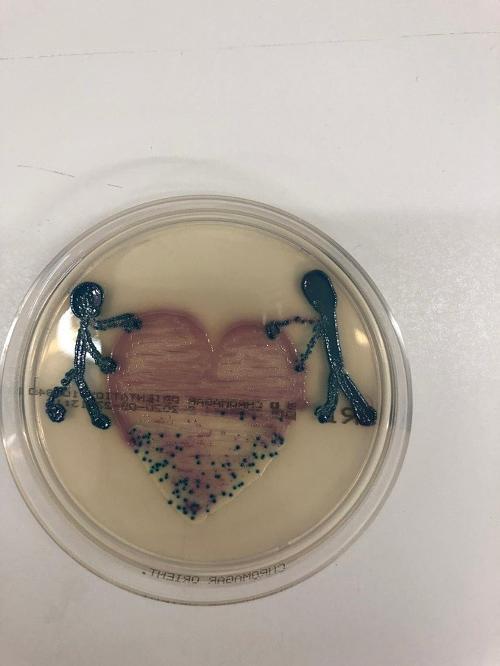by Jessica Gentry
Biomedical Scientist, Microbiology Department, Oxford University Hospitals NHS Foundation Trust, John Radcliffe Hospital
Published 29 April 2020
Did you know that there are ten times as many bugs in your body than there are your own cells? However much we hate them, they’re very much a part of us and we ought to find a way to embrace them. As a microbiologist, I personally believe that bacteria are both beautiful and fascinating; I appreciate that you may need a little more persuasion so I have created this selection of agar art to persuade you to look at bugs in a different way!
To help with orientation, each of the attached photos shows a petri dish containing Chromogenic agar. This is a specific type of bacterial growth medium which, through the incorporation of a number of chemical substrates, allows different types of bug to produce specific pigments. Under normal circumstances, we use this to help with the initial identification of bacterial organisms grown from clinical samples ranging from urine to blood to joint fluid and deep surgical samples.
The bacteria I have ‘painted’ with are Escherichia coli (pink), Staphylococcus aureus (white), Klebsiella pneumoniae (Blue) and Pseudomonas aeruginosa (clear), all very common bacteria isolated from samples. Each colony (or tiny blob of colour) originates from a single microscopic organism, hence the term colony forming unit (CFU) that you may have seen on quantitative results reported by the lab. It takes up to 48 hours for a colony to become visible to the naked eye so making bug art is a little like painting with invisible ink and it’s is a bit of a mystery as to how it will turn out in the end!
With the ‘Micro’ plate I have attempted to demonstrate microscopic detail on a macroscopic scale: the pink oval/rod shapes towards the bottom are inspired by the appearance of E coli when viewed down the microscope (gram negative rods), the blue lines of colonies at the top represent Streptococcus (gram positive cocci in chains), and the blue spots in clusters portray the appearance of Staphylococcus (gram positive cocci in bunches).
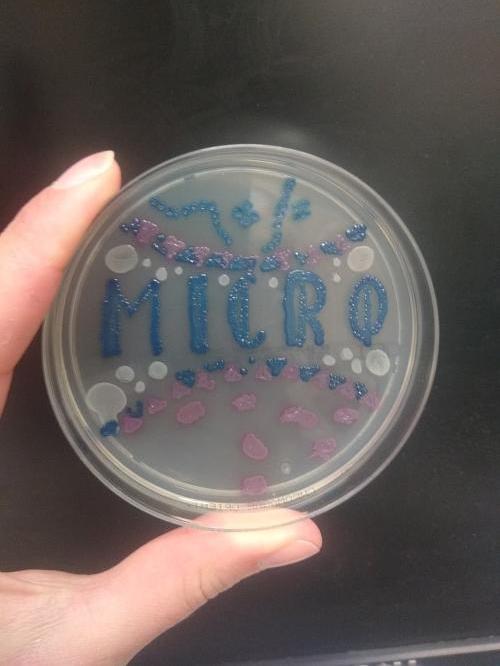
COVID-19 is the micro-organism that will mark this year’s history; key workers have been rightly applauded for their role in keeping essential services going. In salute to those involved, pictures of rainbows have been springing up across the country. Here is my effort to join in with bug art.
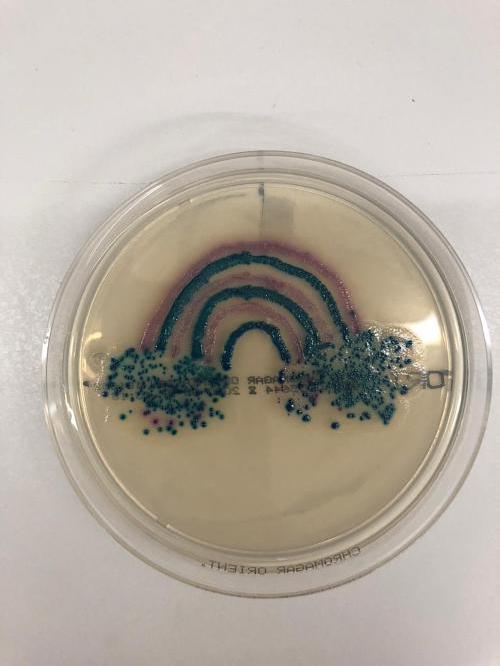
Next year’s BOA meeting will focus heavily on the diagnosis and management of orthopaedic infection. To this end, I was asked if we might create some promotional material using bug art as an appropriate medium. Having carefully prepared one for Belfast I was then informed the venue is now to be Aberdeen!
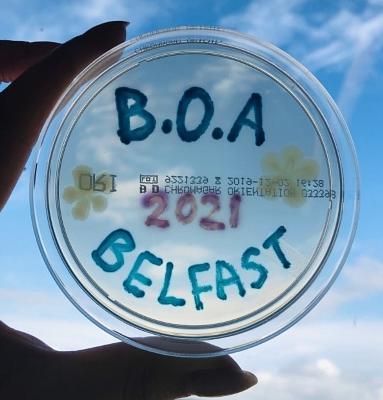
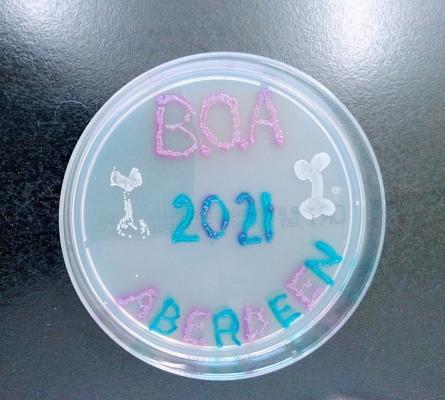
Finally, for those working on the front line, may I offer my personal artistic tribute to you for your continuing kindness, compassion and unending effort in the strange times we’re living through at the moment. Please stay safe and look after yourselves.
Jessica
